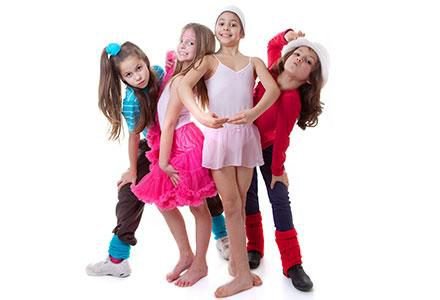For Dance Teachers this would fall under the “common sense category” for those of us who have been teaching ballet successfully for years. By successful, I mean; creating healthy, capable, well-aligned and proficient dancers who are able to pursue dance to the highest level of their physical abilities. I feel strongly that much of this success is established during the foundation years and to include the growth that occurs between the ages of 7-10.
Of course, there are always one-off situations. However, in my opinion, when I work with dancers over the age of 10, I can distinguish quite easily those who’ve been properly trained with a strong foundation, and those who have not.
There is a wide range of technical achievements that occur between ages 7-10; I feel each year between those ages is significantly different in learning process and what needs to get accomplished. Below, I have provided a few tips that I have found helpful when mentoring new teachers who work with this age group. These tips have been generalized rather than specific so they can apply easily to what is appropriate technically to be teaching during this wide age bracket.
-Teach, don’t entertain. Giving too much “choreography” in class rather than technical exercises at this age serves more as an entertainment process rather than a teaching process. If you want solid technicians, teach them, don’t entertain them.
-Slow, diligent work is more effective than fast, sloppy movements. Take the barre work SLOWLY. Work through the feet, teach articulation. Even though they may not fully understand anatomy, you will be surprised how much they can truly feel the muscles working when movements are executed, slowly. Find ways to make them feel their muscles.
-Face the barre. Don’t be eager to turn every barre exercise into one hand on the barre. Rather, spend more time with the exercises facing the barre and focus on alignment, weight distribution and timing.
-Sometimes Center is best. If you are having trouble getting your dancers to accomplish an exercise at the barre, sometimes, bringing them center and having them place hands on their hips while they try to gain muscle control of their bodies during the exercise works best.
-Encourage musicality, early! I could always tell which of my students played instruments as they already understood how to count and could hear music. Not all of your dancers will also be musicians so you must also spend time making sure they understand musicality and accents.
-Advancing a dancer too quickly means having to fix a dancer later. It’s much easier to take the process slowly when they are young and not advance a student too fast rather than have to take a more “advanced” older dancer backwards and re-teach the basics. Bad habits are hard to break.
-Use imagery as inspiration. Dance is work, but dance is also joy! After all, they are children. Children have big imaginations and get excited about things they can mentally relate to. Remember that when giving your classes and corrections. Instill the love! Be alive and present in the moment with them.
-You are responsible for your knowledge. As teachers we must always be learners. If you are finding you are not successful getting the results you are hoping for, observe a more seasoned teacher who is successful at teaching a specific exercise or level. Ask for help. Dancing and teaching are two different skills. Both require knowledge, but teaching requires also having the ability to SEE what the body needs, and fix it. Don’t teach what you don’t know.
-Use multiple methods to make corrections. Verbal and tactile cues as well as creative imagery are all part of the process.
-See the body and ALL of its parts. Dance is not just about creating big movements. It’s all of the intricacies; the details. Teach not only the movement of the body, but the details of the fingertips, head and feet. Everything has to be aligned. Ballet creates lines. If you’re just teaching movements/steps, you’re not teaching ballet.
Most importantly, you have to LOVE this job to be effective. Being a Dance Teacher is rewarding because you see transformations before your eyes on a daily basis. If you aren’t seeing improvements, seek help.

